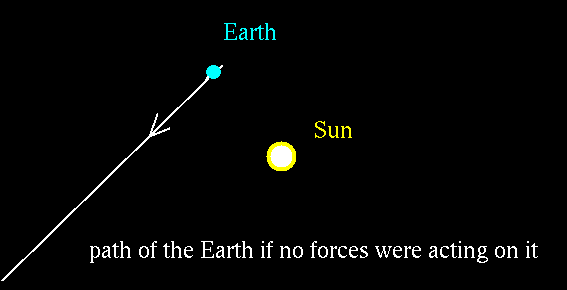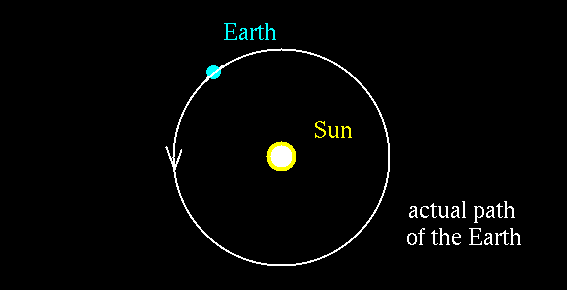A first look at motion and gravity.
Reading: Kaufmann, Sections 4-6 and 4-7, in
Chapter 4, Gravitation
and the Motions of Planets.
There are two simple and important ideas to understand for a start. (We
will come back to a little more detailed look later.)
- It is natural for things to be moving.
- The Greek philosopher Aristotle thought otherwise. He said that it
was natural for things to be at rest, and if something is moving you
should explain why. (For him, objects in the heavens were an exception.)
- The contrary view, supported by experiment, is ``Newton's first law of
motion'':
A body remains at rest or moves in a straight line at a constant speed unless
it is acted upon by an outside force.
- So if there were no forces acting on the Earth, it would move
in a straight line at the same speed forever.

- Gravity is a force that acts to pull every body toward every other
body.
- Bodies with a lot of mass create more gravitational force.
- The gravitational force of the Sun bends the Earth's path into
(almost) a circle.
-

Davison E. Soper, Institute of Theoretical Science,
University of Oregon, Eugene OR 97403 USA
soper@bovine.uoregon.edu

